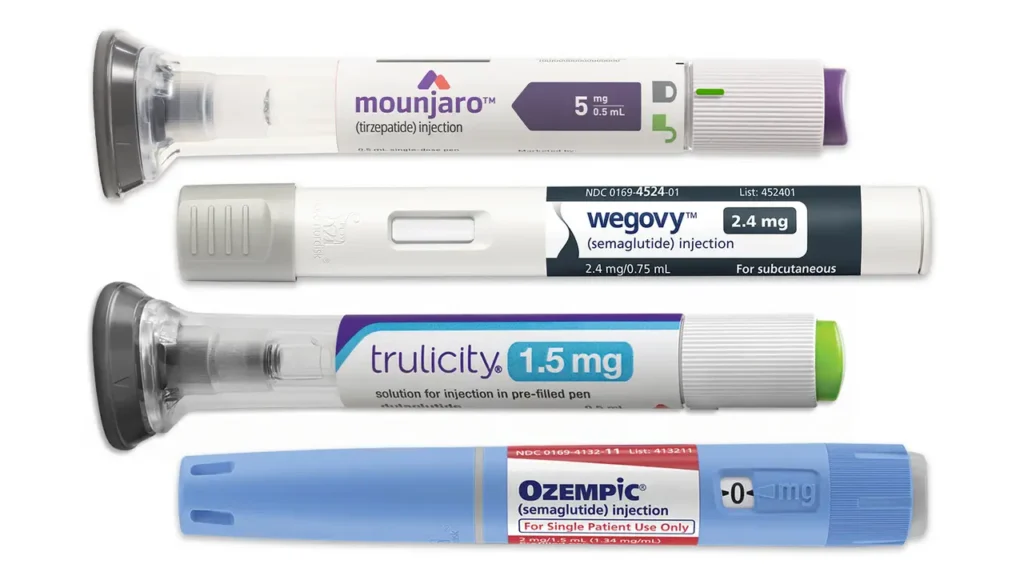Key Takeaways
- As mentioned earlier, hip dips are a normal part of human anatomy and cannot be 100% corrected through exercising alone, which is where fat grafting comes in.
- Fat grafting to hip dips: lipo from abdomen. Fat purification. Injection. Removes fat and enhances hips.
- Face-to-face consultation with a qualified surgeon is crucial for setting realistic goals, understanding your individual anatomy, and minimizing risk.
- Optimal candidates are healthy patients with ample abdominal fat stores and reasonable outcome and recovery expectations.
- Adhering to pre- and post-op care, living a healthy lifestyle, and keeping up with follow-ups is key for best results and fat retention.
- By keeping up with innovations in fat grafting and selecting an experienced surgeon, you can get the most beautiful — and safest — results.
Fat grafting to hip dips via lipo from abdomen is an approach that utilizes stomach fat to fill and even out indentations along the hips. So many people choose this option because it takes your own body fat and gives it that hourglass shape such as well-rounded hips and a more proportional appearance. It typically begins with a mild lipo from the abdomen, then physicians purify and transfer the fat to the hip dip. This could be the way to go if you have sufficient stomach fat and desire an organic transformation. It can translate into reduced risk of allergic complications. The following guidance sections display expectations, safety precautions, and aftercare.
Understanding Hip Dips
Hip dips – known as ‘violin hips’ – are naturally-occurring concave curves seen on the outer sides of the hips. These dips are influenced by your bone structure, genetics and distribution of fat on your body. They’re prevalent in both genders and can be more or less prominent depending on your physique.
Anatomy
Pelvis and hip bone shape is the primary determinant of if hip dips show. If the gap between your hip bone and the top of the thigh bone is wide, dips tend to be more pronounced.
Fat overlies muscle and bone, so the way your body deposits fat alters how much hip dips are exposed. If you’re skinny or carry less fat on your hips and thighs, you might be aware of dips more, but those with curvier figures can have them as well.
Muscle tone, particularly in the glutes and thighs, can make dips appear softer or sharper. Take, for instance, athletes with powerful glutes who can still have hip dips — they may appear less pronounced.
Specific body types, such as “pear” or “hourglass,” can display hip dips with increased visibility. All shapes–even “rectangle” or “apple” – can have them, as well.
Common Myths
Hip dips are not an indicator of overweight or unhealthiness. They’re a normal part of anatomy.
They’re not imperfections. Actually, we all have some degree of hip dip, regardless of our size or background. Social media makes them appear to be rare, but they’re not.
Both men and women have hip dips. They’re not a ‘female’ thing.
Exercise and diet may build muscle or reduce fat, however they cannot alter bone shape. Sure, squats and lunges might lend a hand, but they’re not going to wipe out hip dips for good.
Aesthetic Goals
Fat grafting is a common method to smooth out hip dips. The operation is typically performed at a hospital or clinic. It’s minimally invasive and takes two to four hours.
Doctors can take fat from anywhere, but the abdomen is a common donor because it’s safe and easy to access. The fat is subsequently washed and filtered to retain only healthy cells.
The purified fat is then injected little by little into the hip dips. This aids in filling out the dips and smoothing the curves. The technique sculpts the stomach by eliminating fat, providing a double contouring effect.
Final Notes
Somewhere around 30–70% of the transferred fat can be absorbed. Results take up to six months to manifest fully. Good candidates are nonsmokers, near their ideal weight, with good skin tone.
The Procedure Explained
Fat grafting to hip dips with lipo from the abdomen is a two-fold procedure designed to even out your hip lines and add volume. Every step of the way — from planning to recovery — has to be patient-focused, goal-directed, anatomical and safe. Outcomes depend on a number of variables, such as skill and physical reaction.
1. Consultation & Planning
Consulting with a professional surgeon is crucial. Patients need to discuss their objectives, inquire about dangers, and communicate expectations for the outcome appearance.
A solid plan begins with a detailed examination of the body contours, skin quality and fat deposits. Frank conversation about what is and isn’t feasible builds trust and establishes genuine expectations. Ask them to jot down questions and concerns, particularly about convalescence and outcomes.
2. Fat Harvesting
Surgeons extract fat from the belly using liposuction. They typically select areas with adequate fat and quality cells for durable results. With fine cannulas, they puncture the fat to suck it out and keep the scars low. How much is removed is important—a larger amount can better contour hip dips, but too much may not be safe or necessary.
3. Fat Processing
Once all the fat is removed, it has to be washed. Surgeons then filter or centrifuge to remove any excess fluid and non-viable cells. The objective is to conserve the most viable fat cells, which provides the greatest opportunity for the graft to “take” in its new location. The clean fat is then loaded into small syringes for even placement in the hips.
To achieve a flat natural curve, the surgeon gradually injects thin layers of fat throughout the concavity. This step is finicky—too much in one area creates lumps and not enough can make things wear off sooner. Cautious layering is important as much as 50% of the fat is absorbed by the body so you’re going to lose some. It takes a careful balance of gentle hands and a trained eye to make the fat ‘stick.’
4. Fat Injection
Tiny, deep injections help balance the contour of both hips. The objective is to flow seamlessly with the natural curve. Method counts—bumpy placement or uneven layers can cause lumps.
5. Dual Contouring
Dual contouring refers to optimizing the abdomen through fat removal and hip dip fillers for body sculpting. This trick aids both regions appear superior together. When done well the shift is subtle, but can make the entire contour appear more smooth and balanced.
Candidacy Assessment
Fat grafting to hip dips with lipo from the tummy is a hot commodity for those looking to smooth out curves and add shape. Not everyone is biologically suited for this surgery. Individuals within 30% of their desired weight usually achieve optimal outcomes. Maintaining a stable weight, good nutrition and activity levels all factor in the healing and longevity of results. Attitude and focus count as well. Knowing your body shape helps establish expectations that are realistic.
Ideal Candidates
Those with chronic illness such as heart disease, uncontrolled diabetes, or untreated infection need to avoid this procedure. Fat grafting is not safe for high-risk individuals. For instance, a person with unstable blood sugar could experience issues with wound healing.
Auto-immune conditions and bleeding disorders contribute additional risk. Lupus or other immune problems may cause people not to heal as anticipated and bleeding problems can cause large bruises or slow healing. Surgeons check for these prior to surgery. Candidates with unrealistic hopes—desiring a “magic” body or believing surgery will repair self-esteem—are typically advised to reconsider. A good attitude is the secret to success. Doctors do comprehensive pre-op checks. These are blood tests, history, and conversations about goals to remain safe.
Unsuitable Candidates
Fat grafting isn’t for the masses. Some will have too little fat for harvesting, or medical problems making surgery prohibitive.
The post-flu fatigue can linger, sometimes two to three weeks. Swelling, bruising and mild pain are typical in the initial days. Others experience swelling up to a month. You’ll probably need to stay off your sides for a sleep or at least an extended nap. Your doctor will provide a laundry list of rules, such as wearing compression garments and avoiding strenuous workouts. After these assist the fat endure & mend r.
For the majority, they are back to normal life at the two week mark but recovery is gradual. Have patience. Rushing back to 100% can ruin the result.
Recovery Journey
Recovery from fat grafting to hip dips with liposuction from the abdomen is incremental. Recovery time and care requirements vary at each phase, with sleep, observation, and healthy habits all influencing the ultimate result.
Immediate Aftercare
Pain and swelling are to be expected immediately following the procedure. Most are sore the first few days, particularly around the hips and abdomen but this begins to subside slowly. Of course, there’s the prescribed pain medicine and cold packs. Swelling can initially cause the area to appear asymmetrical or overly large, and it may persist for a few weeks.
Compression garments are worn to assist in molding the treated areas and control swelling. These clothes support the recovering tissues, decreasing the chances of fluid accumulation. By wearing them as prescribed, typically both day and night for the initial weeks, you can expedite recovery and contour the end result.
Sleep is crucial, particularly during the initial two days. You should avoid putting pressure on the grafted areas or incision site, in order to reduce the risk of complications. Light activity, such as brief walks, is encouraged after the initial couple of days to promote circulation and minimize blood clots. They said that most people can return to light activity after 1-2 weeks but emphasized not to push regular activities back too soon.
Long-Term Healing
Full recovery could be up to six weeks with the most swelling going down by the end of the first month. Your body continues to shift as it recovers, therefore the end shape might not reveal itself until 3-6 months after surgery. Some of the fat that’s been added—up to 70%—might be reabsorbed by the body, so some patients require touch ups to achieve their desired look. Patience is required, as outcomes evolve.
Permanent results rely on maintaining a healthy weight and stable schedule. Significant weight fluctuations may alter its new shape. Having balanced meals and staying active are easy ways to help your grafted fat stick.
Safety and Risks
Fat grafting is considered a safe and well-tolerated procedure in the majority of individuals. Swelling and bruising, the typical side effects, typically subside within a few weeks. Unusual dangers entail infection, fat necrosis, or patchy fat reabsorption, however these are uncommon with experienced care and sound post-op practices.
Surgeons typically arrange follow-up appointments to monitor recovery. These visits catch and address any problems early, such as lumps or signs of infection. Knowing what to watch for and how to care for your incision can really save you a recovery experience.

Risks & Realities
Fat grafting to hip dips with tummy fat is a new wave body curve reshaping trend. Though providing genuine rewards, the endeavor brings a load of hazards and realities. Understanding what these are assists patients in making intelligent decisions and identifying problems before they escalate.
Potential Complications
Infection is the primary risk following fat transfer, but it’s uncommon with quality care. Redness, swelling or pain that increases in severity require prompt medical evaluation. Fat necrosis — where a portion of the transferred fat cells perish — may cause firm nodules or oil cysts beneath the skin. Lumps or uneven areas can occur if fat doesn’t settle evenly, particularly if the skin is thin or excess movement to the area during healing. A fat reality is that SOME fat WILL fall—up to 30-50% can be reabsorbed, only 60% remains FOR GOOD. Identifying indicators such as hardness or discoloration early on can assist in obtaining immediate care. For safety and good results, share any concerns, even if they seem minor, with the surgeon.
Managing Expectations
It’s important to be aware that fat grafting doesn’t respond the same way for each person. Your body might take up more or less of the fat and the end appearance varies by your own anatomy. For certain individuals, there are beautiful curves; for others, dips and cellulite may persist. It’s a reality for almost 90% of women, and although fat grafting can assist, it’s not a panacea. Open discussions with the surgeon regarding objectives and what is achievable can avoid dissatisfaction and define a transparent direction for progress.
Technique & Aftercare
The surgeon’s finesse is crucial for fat survival and smooth results. Thoughtful positioning assists the new fat cells “take” and minimizes lumps or loss. After surgery, what patients do matters as well–compression garments worn all day during the first month and at least 12 hours a day during the second help contour results. You should skip heavy exercise for two weeks so you don’t dislodge the grafts. There are advancements being made in fat graft research, but some absorption is inevitable.
Costs & Practical Matters
Prices range from $5,000 and $15,000 depending on location and the extent of the procedure. It’s not a cure, but for many, it’s a helpful alternative.
The Art of Fat Survival
Fat grafting to hip dips with abdominal fat is more than just transposition. The survival of the transferred fat for the long term is all about planning, technique and aftercare. The act itself is trickier than it appears, each maneuver affecting how much fat remains suspended and how slick the end product appears.
Surgeon’s Technique
A surgeon’s hand sculpts the result. Why experience in fat grafting matters is because only approximately 50–60% of the transferred fat survives the healing process. Specialized liposuction helps harvest quality fat with less trauma. Accuracy in injection is important—implanting the fat in tiny quantities, depositing layer upon layer, provides the new cells with the best opportunity to establish contact with blood supply, which typically takes six months to establish a permanent bond. Surgeons are gentle with their handling and don’t overload fat into one region as it can increase the risk of lumps or decrease survival. No two bodies are alike, so our surgeons customize each surgery to the patient’s individual curves for a natural appearance.
Patient’s Role
Patient behavior post-surgery is equally crucial. Adhering to all pre- and post-op guidelines encourages healing and fat preservation. Lying on the hips or applying pressure to the grafted site for a minimum of six weeks may damage the new fat, as it’s still attempting to establish a blood supply. Good nutrition and hydration assist the body to heal and maintain the fat cells. Light walking or gentle movement, as recommended by the care team, helps circulation but doesn’t strain the treated area. Staying connected with the surgical team keeps any problems caught early, and adjustments can be made if needed.
Future Innovations
Tech and research in fat grafting advance New technologies are not far from fat survival enhancement—research centers around more efficient processing, unique additives, and even stem cell enhancement. Current studies seek to reduce complications, reduce fat shedding (currently approximately 30–70% within a year) and assist patients achieve more sustained outcomes. Patients who keep up can benefit from the newest advances as they come online.
The Big Picture
Fat grafting for a safe, durable way to smooth out hip dips. Selecting a talented surgeon is critical. Think about your own goals and body shape. This choice can tone a more proportioned physique.
Conclusion
Fat grafting to hip dips with lipo from belly provides an immediate, tactile solution for people who want smooth hips. They’re doctors, so they first harvest fat from your stomach, then contour it into the dips for a smoother curve. Most notice differences within a few months. Some fat doesn’t survive but touch-ups maintain the look. Things like swelling or bruising get better with time. Everyone heals differently. Having an open dialogue with a qualified physician really helps clarify goals and keep things safe. For additional advice or to query, contact a board-certified clinic, or support group. Be in the know and choose what suits you.
Frequently Asked Questions
What is fat grafting to hip dips?
Hip dip fat grafting is an aesthetic procedure. It utilizes your own body fat, typically harvested from the abdomen, to plump and contour the natural grooves on the sides of the hips.
How is fat taken from the abdomen for hip dip correction?
Fat is harvested from the abdomen via mild liposuction. This fat is then processed and re-injected into the hip dip areas to add volume and produce a fuller, more symmetrical silhouette.
Who is a good candidate for hip dip fat grafting?
Perfect candidates are fit adults with sufficient excess abdominal fat for relocation. A consultation with a qualified surgeon will help you know if this procedure is right for you.
What is the recovery time after the procedure?
Most folks require approximately 1-2 weeks. Swelling and bruising are to be expected, but you can typically resume light activity after a couple of days, as per your surgeons recommendations.
Are the results of fat grafting to hip dips permanent?
Results are long-lasting if the fat survives. Some of that fat will be reabsorbed by your body over the years and a touch-up is warranted.
What are the main risks of this procedure?
Risks are infection, irregularities, fat re-absorption and small scars. Selecting a seasoned, board-certified plastic surgeon will mitigate these risks.
How much fat survives after transfer to the hips?
On average, 60–80% of the transferred fat survives. Good post-procedure care and staying off the hips increases fat survival.









